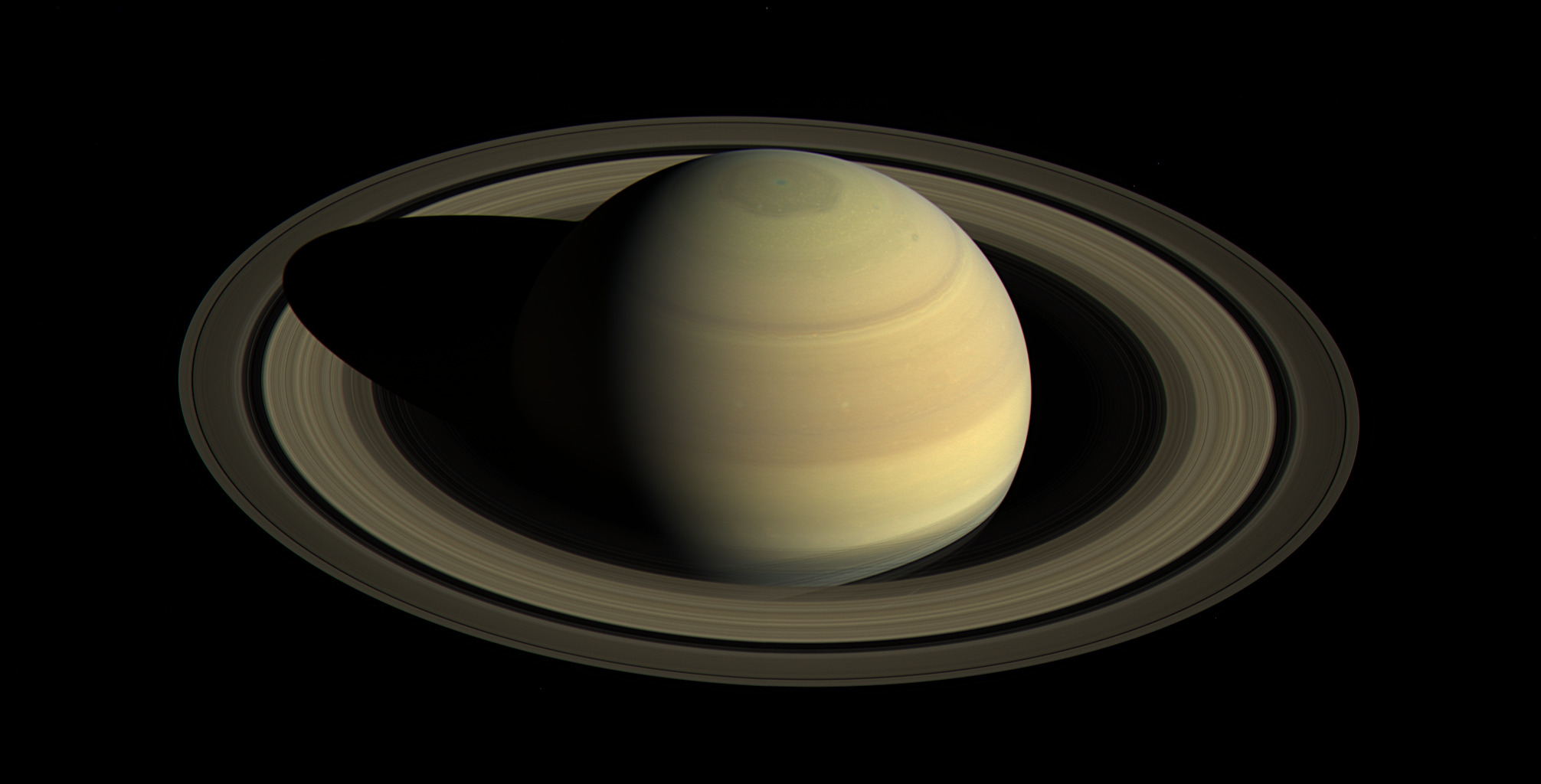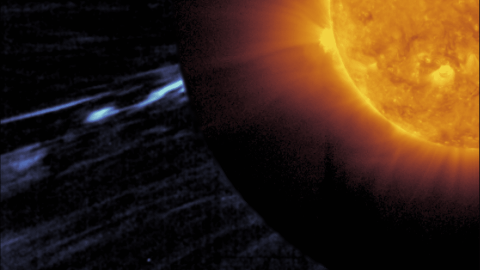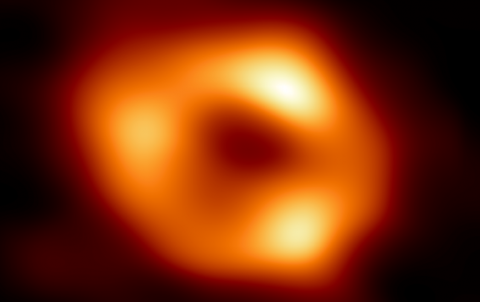Reactions to study suggesting Saturn's rings and tilt may be the product of a missing moon
Research published in Science proposes that an ancient moon of Saturn, which they have named Chrysalis (Chrysalis), may be responsible for Saturn's distinctive rings. According to the authors, the moon orbited around the gas giant for billions of years, but about 160 million years ago, it became unstable and moved too close to the planet, breaking apart under Saturn's tidal forces and forming the planet's rings. According to the research, Saturn's current tilt may also be related to the destruction of this moon.

Ricardo Hueso - anillos Saturno EN
Ricardo Hueso Alonso
Researcher at the Department of Applied Physics I and the Planetary Sciences Group of the Bilbao School of Engineering of the University of the Basque Country UPV/EHU
Ever since Galileo Galilei's first observation of Saturn with a telescope more than 400 years ago, the rings have been mysterious. Galileo could not identify what they were and, decades later, the astronomer Giovanni Domenico Cassini identified gaps in them. James Clerk Maxwell, famous for his laws of electromagnetism, devoted his early years of research to determining the nature of the rings, concluding that they were made up of a myriad of small bodies whirling around Saturn at speeds determined by the gravity of the immense planet, 95 times more massive than the Earth.
The Cassini spacecraft (NASA) explored the Saturn system between 2004 and 2017, determining that the rings had the equivalent mass of one of Saturn's numerous icy satellites, a chemical composition of water ice, and an apparent age of only about 100 million years old. In a solar system formed 4.5 billion years ago, this is a very young age. But what is the origin of the rings and why are they so young? Could they be the remains of a satellite of Saturn broken up by the planet's tidal forces? Although this is a common proposal for the origin of the rings, it has traditionally presented difficulties in explaining the young age of the rings.
Another mystery of Saturn is its axis of rotation, which is tilted 27° with respect to the axis perpendicular to the ecliptic, which is the average plane in which the planets orbit. This inclination is similar to that of the Earth's axis of rotation, which is tilted by 23°. For a planet as large as Saturn, it is very difficult to explain this large tilt. However, the largest of Saturn's satellites, the large moon Titan, has an orbit that moves away from the planet due to tidal braking and this motion may contribute to the tilt of the planet's rotation axis. In the present solar system, Saturn's axis of rotation also undergoes a slow spin like the axis of a spinning top, which does not remain fixed but, in the case of Saturn, rotates in a direction perpendicular to the ecliptic. This movement is called precession and has a parallel on Earth, where the precession of the axis of rotation occurs with a period of 25,800 years. On Saturn the precession of the rotation axis has a period of 1.7 million years and that figure is surprisingly close to the precession of Neptune's orbit. Are these phenomena related? In their paper in Science, Jack Williams of the Massachusetts Institute of Technology (MIT) and colleagues say so.
In a cosmic billiards manoeuvre, Jack Williams and his team investigate whether Saturn's tilted axis was caused by a combination of Titan's outward migration and gravitational interaction with Neptune in an orbital resonance that no longer exists today. To explain that Saturn is no longer synchronised with Neptune they propose that Saturn has lost one of its satellites, which may have migrated by tidal effects towards the planet and was broken up by Saturn's tides, forming the rings. The proposed name for this lost object is Chrysalis (Chrysalis) and represents the change of this world after it was transformed into Saturn's beautiful rings. The age of the rings correctly verifies the current small decoupling between Neptune's orbital resonance and the precession of Saturn's rotation axis. This theory is an elegant statement of the complex effects of gravity on planetary systems and shows that the solar system is a rich and varied place subject to permanent change.
Eva Villaver - anillos Saturno EN
Eva Villaver
Researcher at the Astrophysics Department of the Astrobiology Centre (INTA-CSIC)
Saturn's rings were discovered by Galileo, who described them as "ears", and as we have learned more about them, the more puzzling it is to explain their origin. In general, such structures often form as a result of the formation processes of the larger bodies around which they orbit. The rings are formed by debris, smaller rocks that are released in collapse processes or are generated later in collisions and survive as part of the system in the form of discs.
In the case of Saturn's, all determinations indicate that they are young (about 100 million years old) which is difficult to explain, just as it is difficult to understand why the planet has such an inclination angle or the origin of the eccentricity - how far the orbit is from being circular - of the moon Titan. The authors suggest a mechanism that can explain all the phenomena at once: the age of the rings, Titan's orbit and the planet's tilt angle. They do this on the basis of computer simulations, which is the only way we have to determine how several bodies move at the same time under their mutual influence.
These simulations include a more precise measurement of Saturn's outer gravitational field, determined with the Cassini spacecraft, which allows us to better fit models of the planet's interior structure and to narrow down the possibilities for the evolution of the system, discarding models that had previously been proposed to explain the formation of the rings as part of the gravitational influence exerted by Neptune. The proposal is simple: the destruction of a moon, and it explains the age of the rings, Titan's orbit and the planet's tilt angle all at once.
Santiago Pérez-Hoyos - anillos Saturno EN
Santiago Pérez-Hoyos
Researcher at the Department of Applied Physics and the Planetary Sciences Group of the Bilbao School of Engineering of the University of the Basque Country UPV/EHU
Saturn's rings are undoubtedly one of the most striking structures in the solar system. Known since the first telescopic observations in the 17th century, they are the most developed and spectacular ring system we know of. However, there are still many unknowns about how, when and why they were formed. Thanks mainly to the Cassini mission, which orbited the planet between 2004 and 2017, there is now some consensus that the rings are young in astronomical terms, having formed "only" about 100 million years ago. The work by Wisdom et al. offers a plausible explanation for how this formation could have taken place.
According to this work, Saturn may have had a moon in the past, which they call Chrysalis, which during its orbital evolution may have given rise to both the rings and other orbital peculiarities, such as the inclination of the planet's orbit, very similar to that of the Earth. This model seems to fit very elegantly with the orbital variations of other satellites such as Titan and with the gravitational interactions that the entire Saturn system establishes with nearby Neptune. Also the mass estimates fit with the idea we have of the body that, by breaking apart, could have formed the rings. Moreover, the idea that a planet that today has more than eighty known moons may have had a few more or fewer satellites is not at all far-fetched.
In any case, although this hypothesis is apparently firm and stands up to a first detailed analysis, it will be necessary to continue studying both Saturn's rings and the complicated gravitational interactions between them, the planet, its many satellites and the neighbouring planets. Unfortunately, we will not have a space mission in the near future that can analyse this problem in situ, and we will have to make do with observations from astronomical observatories and numerical calculations such as those presented in this study.
Jack Wisdom et al.
- Research article
- Peer reviewed


